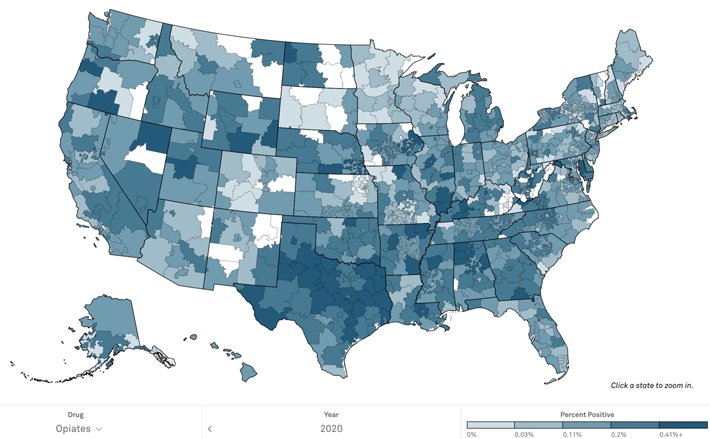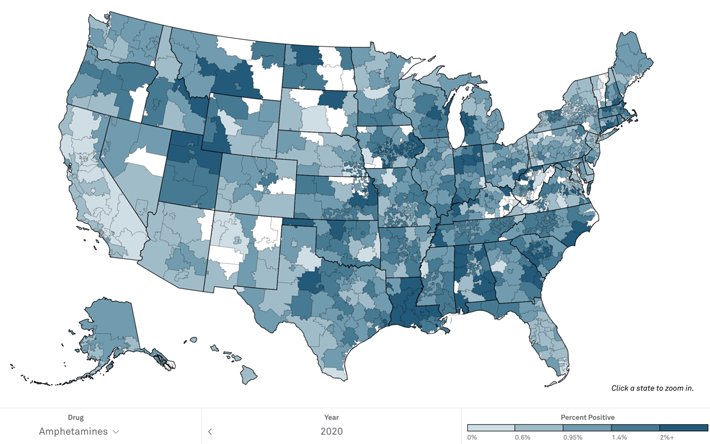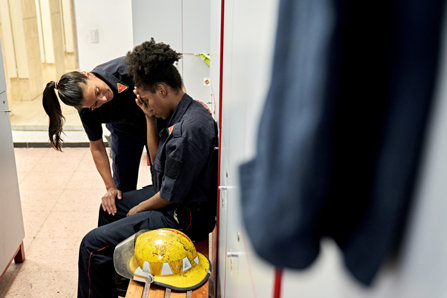How Drug and Alcohol Abuse Are Invading Our Workplaces

I think we intuitively know that employees are the most productive and efficient when they are sober. However, l many of us have probably had experiences with a co-worker who disappeared too often or had alcohol on his or her breath or manifested impairment in some other way.
If we multiply our personal experiences across the entire business landscape of America, it’s easy to imagine the loss in productivity experienced by businesses. The U.S. Surgeon General reported substance abuse costs our society $442 billion each year in healthcare costs, criminal justice costs and sagging productivity in American businesses. If our businesses lead the way to recovery by assisting their employees, we all win.
Signs of Substance Abuse to Watch For
When a person is impaired on the job, what are the most obvious signs?
- Absenteeism
- More sick leave
- Lateness
- Being hungover at work
- Slow production
- Missed deadlines
- Arguments with co-workers or supervisors
- Sudden departures from the job
- Theft
- Mistakes on the job
- Broken equipment
- Damaged premises
- Injuries to self or others
- Fatal accidents

Human Resources Departments that wish to maintain safe and drug-free workplaces are smart to notice these signs of impairment and interview or drug test the employee involved. They can also watch for the following behaviors and symptoms of drug or alcohol impairment.
- Rapid mood changes
- Making excuses for poor performance
- Memory loss
- Confusion
- Refusing drug testing
- Physical deterioration
- Weight loss or gain for no apparent reason
- Stops caring for appearance or grooming
- Secretiveness
- Hostility
Which Industries are Most Severely Affected?
No industry is immune from drug or alcohol abuse among employees. But there are some industries that are more heavily impacted. According to national surveys, these industries have higher rates of illicit drug use:
- Accommodations and food service
- Arts, entertainment and recreation
- Management
- Information technology
- Construction
- Real estate, rentals
- Retail trade
- Professional, scientific and technical services
These are the industries where you are likely to find higher rates of heavy alcohol use:
- Mining
- Construction
- Accommodations and food service
- Arts, entertainment and recreation
- Utilities
- Wholesale trade
- Management
- Agriculture
According to the National Safety Council, each addicted employee costs a company more than $8,000 in absenteeism or healthcare costs plus the cost to find a replacement when they quit or get fired. For executives, the cost is significantly higher at an average of $14,000.
Most Dangerous Professions for Abuse of Drugs or Alcohol

What about those professions where it could be life-threatening to be impaired? If a person drives a truck or bus, constructs a skyscraper or is in one of these other inherently dangerous jobs, the risks to themselves or others are magnified:
- Loggers
- Airline pilots and flight engineers
- Derrick operators in oil, gas or mining
- Roofers
- Ironworkers
- Firefighters
- Power linemen
- Crane operators
- Construction workers
- Highway maintenance workers
Some hazardous jobs require applicants to undergo a drug test before they are hired, for example: firefighters. But once hired, employees might not again be tested unless there is a reason to suspect drug or alcohol use on the job. It is then up to the HR department, supervisors or other employees to identify problems and initiate help for the struggling employee.
How Many American Employees are Impaired?
This map from Quest Diagnostics tells at least part of the story. The darker the areas on the map, the higher the rate of positive workplace drug tests for any illicit or misused prescription drug. The darkest green zones show a rate of positive drug tests of six percent or more.

The next map shows the rate of impairment resulting from opioid use. The darkest areas have positive drug test rates of .41% or higher. That’s a pretty low rate of positive tests, but the vast majority of the U.S. is seeing these positive tests, especially in the South and Southeast.

The final map shows the rate of impairment from amphetamines, which could include non-medical use of prescription stimulants (Ritalin, Adderall, Concerta and others) or illicit drugs such as methamphetamine. The darkest areas show a rate of 2% or more.

Drug Testing in Specific Professions
Fortunately for all of us, many of the employees we really need to be sober are required by the federal government to submit to drug tests. Executive Order 12564, addressing a drug-free federal workplace, established rules for testing federal employees. This Order emphasized testing if there is a reasonable suspicion that an employee used drugs or there was an accident or unsafe behavior.
The Omnibus Transportation Employee Testing Act of 1991 helps keep us safe in many other ways. This law mandates drug testing in the following industries:
Transportation activities including aviation, trucking, railroads, mass transit and pipelines
- The Federal Aviation Administration
- Federal Railroad Administration
- Pipelines and Hazardous Materials Safety Administration.
- U.S. Coast Guard
In general, the provisions of this bill require drug testing before hiring plus random drug tests, testing after an accident and training in drug prevention.
The Department of Defense mandates drug-free workplace policies and testing for their contractors.
The Nuclear Regulatory Commission likewise requires testing of anyone who operates, maintains or constructs nuclear power plants, transports nuclear material or supports these operations.
Our military has its own rules for ensuring that its members are deterred from using drugs and that they are ready for service at any time. As of 2017, applicants and current members must be tested for 26 different drugs, including marijuana, cocaine, heroin, prescription or illicit opioids and amphetamines. Current military members are subjected to random drug testing up to three times each year.
Keeping Your Workplace Drug-Free

It’s never easy for an employee to report a co-worker who is struggling with heavy alcohol use, illicit drug use or misused prescription drugs. Human Resources departments have a responsibility to make it as easy as possible for impaired employees to get help. This includes providing training for all employees on how to maintain a safe workplace, what to do if they see a co-worker struggling and, of course, ensuring the addicted employee has access to effective rehabilitation.
Many companies offer Employee Assistance Programs that help those employees struggling with addiction or personal difficulties such as financial or marital problems. Good health insurance helps employees get the medical care and rehabilitation they need.
There is a huge payoff for everyone involved when impaired employees get sober. The workplace is safer for everyone, the company can achieve higher productivity and it also saves on healthcare, personnel and administrative costs. Best of all, the employee has a chance to reclaim their sobriety and their life. In fact, when this help is offered without delay, it could even save their life.
What can you do if your HR department is not offering to help impaired employees? Perhaps you could take this article to your HR staff and point out the savings to them and the improved safety and productivity of the whole workplace if they do.
Sources:
- https://www.ncadd.org/about-addiction/addiction-update/drugs-and-alcohol-in-the-workplace#
- https://firefighternow.com/do-firefighters-get-drug-tested-a-simple-guide/
- http://www.dtidrugmap.com/#/all/2020
- https://www.aana.com/practice/health-and-wellness-peer-assistance/About-AANA-Peer-Assistance/substance-use-disorder-workplace-resources/signs-and-behavior-of-impaired-colleagues
- https://www.ishn.com/articles/112748-top-25-most-dangerous-jobs-in-the-united-states
- https://www.archives.gov/federal-register/codification/executive-order/12564.html
- https://www.samhsa.gov/workplace/legal/federal-laws/safety-security-sensitive
- https://www.nsc.org/getmedia/9dc908e1-041a-41c5-a607-c4cef2390973/substance-use-disorders-by-occupation.pdf
- https://www.ecfr.gov/cgi-bin/text-idx?SID=0ade64cd292692848e5b0d2a955f8c4e&mc=true&node=pt48.3.223&rgn=div5#sp48.3.223.223_15
- https://www.defense.gov/Explore/News/Article/Article/1108009/dod-implements-expanded-drug-testing-for-military-applicants/
- https://www.samhsa.gov/data/sites/default/files/report_1959/ShortReport-1959.html


 ®
®